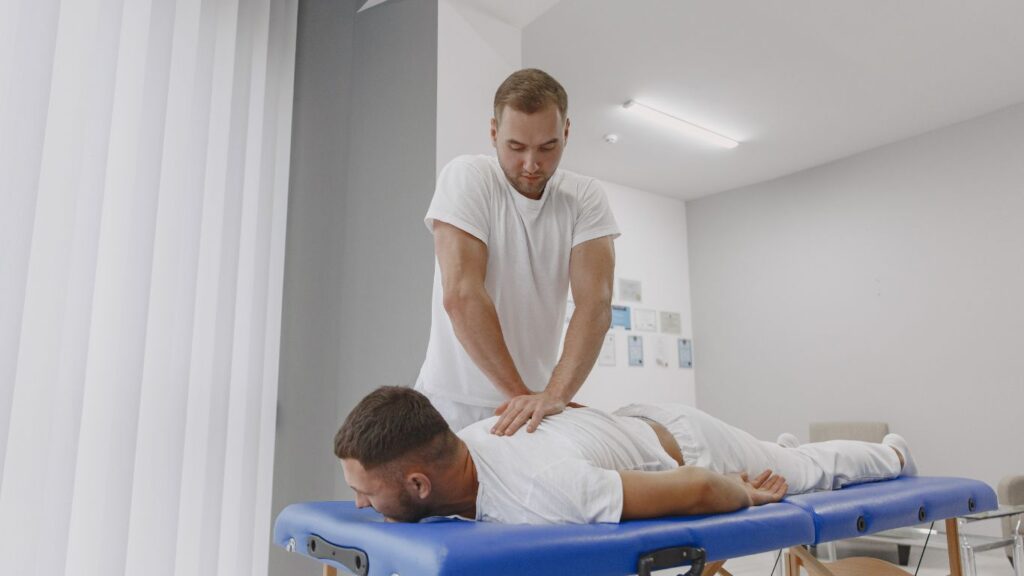Massage therapy has been used for millennia to alleviate pain, reduce stress, and promote overall well-being. However, in recent times, the athletic community has recognized another pivotal role of massage: aiding in muscle recovery and fostering growth. But what’s the science behind this? Let’s explore the physiological mechanisms through which massage therapy impacts muscle recovery and how it can be a game-changer for athletes and fitness enthusiasts alike.
Increasing Circulation
At the foundation of massage’s healing power is its ability to increase blood circulation. When pressure is applied to muscle tissue, the blood vessels are dilated, leading to increased blood flow. Why is this important?
Blood is the vehicle through which oxygen and nutrients are delivered to muscle cells. After a rigorous workout, our muscles experience microscopic tears. To repair and grow, they need a steady influx of nutrients, especially amino acids. By improving blood flow, massage ensures that these vital building blocks reach the muscles more efficiently.
Removal of Metabolic Waste
Lactic acid and other metabolic by-products accumulate in the muscles during intensive workouts. These by-products can contribute to muscle soreness and delay the recovery process. One of the reasons you feel sore a day or two after an intense workout (known as Delayed Onset Muscle Soreness or DOMS) is because of the buildup of these waste products.
Massage assists in draining these waste products from the muscles, expediting their removal via the lymphatic system. This process can alleviate soreness and reduce the time needed for muscles to heal.
Relaxation of Muscle Fascia

Muscle fascia is the connective tissue that surrounds our muscles. Think of it like a sheath that encases each muscle bundle. Over time, especially with repeated stress and workouts, this fascia can become tight and constricted, limiting muscle growth (a phenomenon termed as ‘muscle binding’).
Deep tissue massages target this very fascia, breaking down any adhesions and ensuring that the muscles have room to grow. Additionally, relaxed fascia can improve range of motion and flexibility, which are essential components of athletic performance.
Stimulating Mitochondrial Production
A recent study has shown that massage can stimulate the production of mitochondria in muscle cells. Mitochondria are the powerhouses of our cells, responsible for producing energy. An increase in mitochondrial production means that the muscles can recover and produce energy faster post-exercise. This not only aids in recovery but also prepares the muscles for subsequent training sessions.
Parasympathetic Activation and Hormonal Effects
Massage promotes relaxation not just at the physical level but also at the hormonal and neurological levels. By stimulating the parasympathetic nervous system (often termed the ‘rest and digest’ system), massage encourages the body to go into a state of deep relaxation.
This relaxation can lead to decreased levels of cortisol, the stress hormone. Elevated cortisol levels post-exercise can inhibit muscle recovery and growth. By reducing cortisol and increasing the production of growth-promoting hormones, massage can directly impact muscle recuperation and growth.
Psychological Benefits

Never underestimate the psychological components of recovery. The sensation of touch, the relaxation of muscles, and the time spent in a meditative state during a massage can help alleviate stress and anxiety, which can, in turn, contribute to faster recovery. A relaxed mind often leads to a relaxed body.
Conclusion:
Massage, once thought of as a mere luxury, is proving to be an essential tool in the athlete’s recovery arsenal. Its physiological benefits, ranging from improved circulation to hormonal balance, offer a holistic approach to recovery and muscle growth.
Whether you’re a professional athlete, a weekend warrior, or someone just starting their fitness journey, integrating regular massages into your regimen can make a tangible difference. Not only can it speed up recovery times, but it also prepares your body for future challenges, ensuring that you’re always performing at your best. Remember, it’s not just about how hard you train, but also how effectively you recover.
